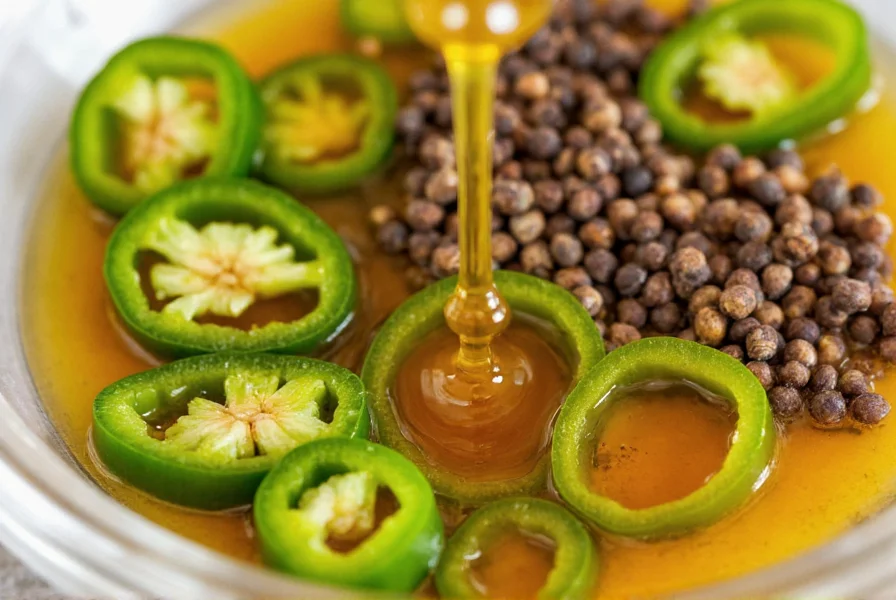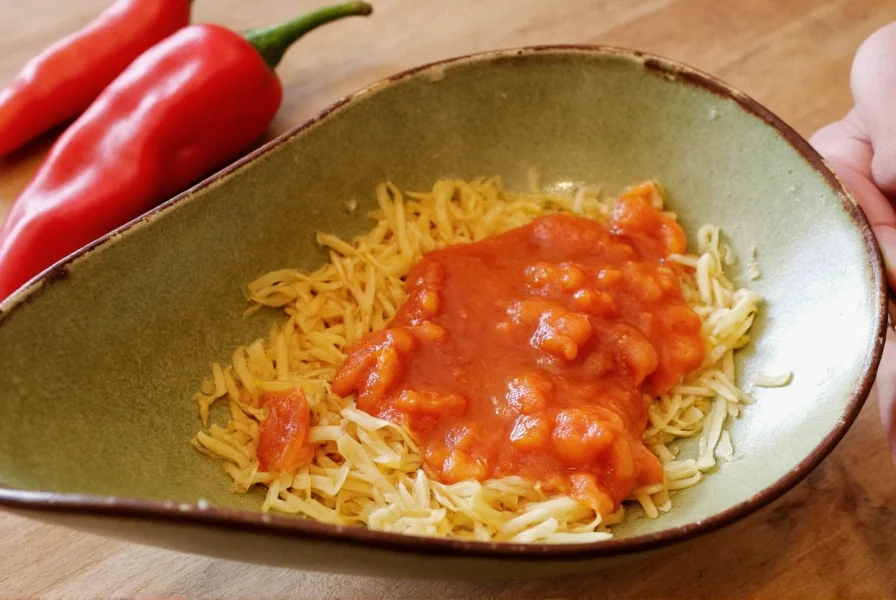Honey pepper sauce has become a staple in modern pantries for good reason. This dynamic condiment bridges the gap between sweet and spicy, offering culinary flexibility that few sauces can match. The magic happens when quality honey meets carefully selected peppers—whether it's the bright heat of fresh jalapeños, the earthy warmth of black pepper, or the smoky depth of chipotles. The resulting sauce creates a flavor harmony that enhances rather than dominates your dishes.
Understanding Honey Pepper Sauce Flavor Dynamics
The perfect honey pepper sauce achieves equilibrium between its core components. High-quality raw honey provides floral notes and natural sweetness that counterbalances the capsaicin heat from peppers. The vinegar component adds necessary acidity to cut through richness and preserve the sauce. When properly balanced, you experience:
| Component | Flavor Contribution | Common Variations |
|---|---|---|
| Honey | Natural sweetness, floral notes | Raw, local, orange blossom, wildflower |
| Peppers | Heat level, fruitiness, smokiness | Jalapeño, serrano, black pepper, chipotle |
| Vinegar | Acidity, brightness, preservation | Apple cider, white wine, rice vinegar |
| Seasonings | Complexity, depth | Garlic, onion, paprika, mustard |
The heat level in homemade honey pepper sauce recipes can be precisely controlled by adjusting pepper quantity and type. For mild versions, remove pepper seeds and membranes where most capsaicin resides. For extra kick, include these parts or add hotter varieties like habaneros. The honey-to-pepper ratio typically ranges from 2:1 for mild versions to 1:1 for spicier iterations.

Perfect Pairings for Honey Pepper Sauce
This sauce's versatility shines across multiple culinary applications. Unlike single-purpose condiments, honey pepper sauce complements diverse proteins and vegetables through its balanced flavor profile. Consider these pairings:
- Chicken wings - The classic application where honey pepper sauce creates sticky, flavorful wings that aren't overwhelmingly spicy
- Grilled pork - Particularly effective with pork chops or tenderloin where the sweetness caramelizes beautifully
- Seafood glaze - Works exceptionally well with salmon, shrimp, and scallops
- Veggie dipping sauce - Elevates roasted or raw vegetables like carrots, bell peppers, and broccoli
- Burger enhancement - Adds complexity to both beef and plant-based burgers
Professional chefs often use honey pepper sauce as a base for more complex preparations. Try mixing it with soy sauce for an Asian-inspired marinade, blending with mayonnaise for sandwich spreads, or thinning with broth for a restaurant-quality pan sauce.
Homemade Honey Pepper Sauce Recipe
Creating your own honey pepper sauce allows complete control over ingredients and heat level. This basic recipe yields a medium-heat sauce perfect for most palates:
Ingredients
- 1 cup raw honey
- 1/2 cup apple cider vinegar
- 4 fresh jalapeños, seeds removed for milder version
- 3 garlic cloves
- 1 teaspoon black pepper
- 1/2 teaspoon smoked paprika
- 1/4 teaspoon salt
- 1/4 cup water
Preparation
- Combine all ingredients in a small saucepan
- Simmer over medium-low heat for 15-20 minutes until slightly thickened
- Cool slightly, then transfer to blender
- Blend until completely smooth
- Strain through fine mesh sieve for ultra-smooth texture (optional)
- Cool completely before storing in airtight container
This homemade honey pepper sauce recipe keeps refrigerated for up to three weeks. For longer storage, process in a water bath canner for shelf stability. The sauce will thicken slightly when cooled, so adjust consistency with additional vinegar or water as needed.

Store-Bought Options and Quality Indicators
When selecting commercial honey pepper sauce, examine the ingredient list for quality markers. Premium products typically feature:
- Real honey as the primary sweetener (not corn syrup)
- Specific pepper varieties listed (jalapeño, serrano, etc.)
- Minimal preservatives and artificial ingredients
- Balanced ingredient ratios without excessive sugar
Many restaurant-style honey pepper sauces contain xanthan gum as a thickener, which is generally acceptable if listed toward the end of ingredients. Avoid products where honey appears lower than the third ingredient, as this indicates diluted flavor. The best honey pepper sauce for wings typically has a thicker consistency to cling to food, while dipping varieties may be slightly thinner.
Creative Culinary Applications Beyond Dipping
Expand your cooking repertoire by using honey pepper sauce in these innovative ways:
- Marinade base - Combine with olive oil and herbs for 24-hour protein marinades
- Salad dressing foundation - Whisk with extra vinegar and olive oil
- Glaze for roasted vegetables - Toss with root vegetables before roasting
- Stir-fry sauce component - Add during final cooking minutes for glossy finish
- Cocktail mixer - Small amounts enhance bloody marys and other savory drinks
For meal prep enthusiasts, portion honey pepper sauce into ice cube trays and freeze. These flavor cubes can be added directly to soups, stews, and sauces for instant flavor enhancement without measuring.
Frequently Asked Questions
What's the difference between honey pepper sauce and sweet chili sauce?
Honey pepper sauce primarily features honey and various peppers as its base, creating a more complex heat profile that can range from mild to hot. Sweet chili sauce typically uses red chili peppers with significant sugar content and rice vinegar, resulting in a fruitier, consistently sweet flavor with moderate heat. Honey pepper sauce generally has a deeper, more nuanced flavor profile compared to the brighter, one-dimensional sweetness of most sweet chili sauces.
Can honey pepper sauce be made without vinegar?
While vinegar provides necessary acidity and acts as a preservative in traditional honey pepper sauce recipes, you can substitute with lemon or lime juice for a fresher profile. However, completely omitting acidic components will significantly shorten shelf life and alter the flavor balance, making the sauce overly sweet without the necessary counterpoint. For immediate consumption, you could reduce or eliminate vinegar, but proper preservation requires some acidic element.
How can I adjust honey pepper sauce heat level after making it?
To reduce heat in an already prepared honey pepper sauce, gradually add more honey or a neutral oil like avocado oil, which helps dissolve capsaicin. For increased heat, incorporate small amounts of cayenne pepper or additional processed peppers. Remember that heat perception diminishes slightly when the sauce is used as a marinade or glaze due to caramelization during cooking. Always adjust heat levels incrementally and allow 15-20 minutes for flavors to meld before reassessing.
Is honey pepper sauce gluten-free?
Most basic honey pepper sauce recipes are naturally gluten-free as they contain only honey, peppers, vinegar, and seasonings. However, some commercial varieties may include gluten-containing ingredients like soy sauce derivatives or wheat-based vinegars. Always check labels if you require strict gluten-free options, and when making homemade versions, verify that any additional ingredients like Worcestershire sauce (which often contains barley) are gluten-free if needed.
What's the best way to store homemade honey pepper sauce?
Store homemade honey pepper sauce in a clean, airtight glass container in the refrigerator for up to three weeks. For longer storage, process in a water bath canner for 15 minutes to create shelf-stable jars that will keep for 12-18 months unopened. Always use clean utensils when handling the sauce to prevent contamination, and if you notice any mold, off smells, or fermentation bubbles, discard the entire batch immediately.











 浙公网安备
33010002000092号
浙公网安备
33010002000092号 浙B2-20120091-4
浙B2-20120091-4